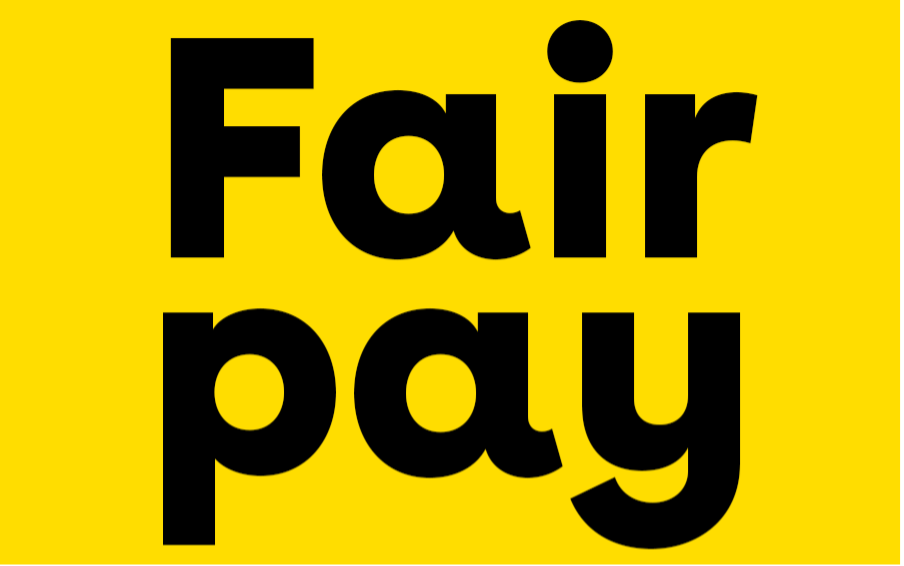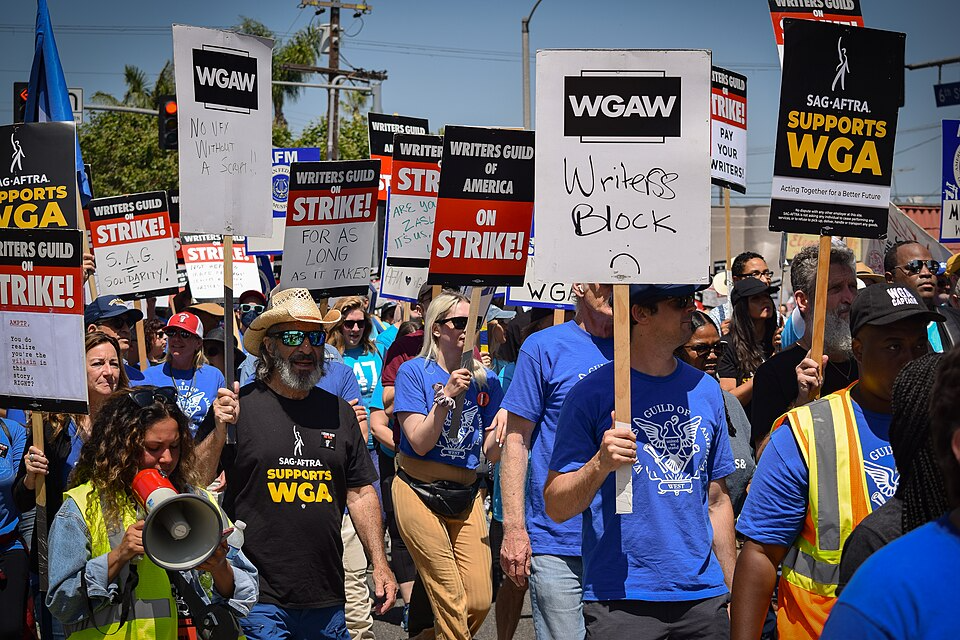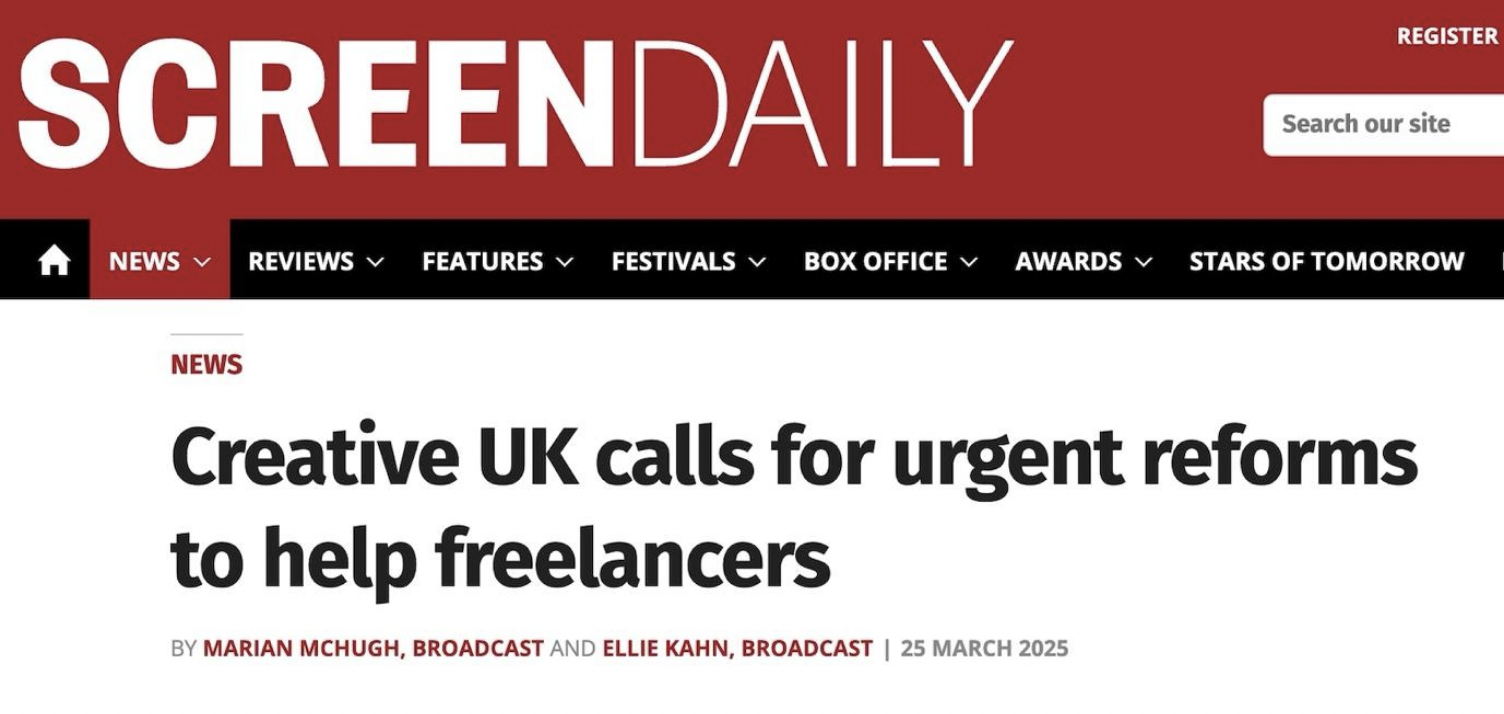Fair Payment in the Film and Television Industries
Roderik Smits / Erasmus University Rotterdam

Fairness has long been a critical issue in the film and television industries. Research has exposed not only systemic discrimination of women and marginalised groups in above-the-line and below-the-line roles but also issues such as labour exploitation, pay gaps, intellectual property restrictions, and contract disputes. In particular, freelance creatives can face persistent fairness challenges due to the inherently unstable, precarious, and unpredictable nature of their work.
As independent contractors and entrepreneurs, freelance creatives typically work on a temporary basis, from project to project, with short-term contracts, and in different teams. These factors can make their work dynamic, flexible and diverse. However, it can also be precarious, as performance and reputation can increase (or decrease) their chances of securing projects in a highly networked ecosystem.
In industry discussions about freelancers and creative labour, fair payment is particularly associated with issues of fairness. This may include compensation practices for freelancers, such as payment structures, payment terms, rates, and/or fees, as well as contract agreements and employment protection. It is important to note that the severity of compensation issues can vary by country: some have established comprehensive regulatory frameworks, others have weaker or partial regulations, and still others lack such protections. Similarly, the rigidity of contract agreements and employment protection can vary by country.
With such disparities in mind, one could argue that less regulatory protection can make freelancers more vulnerable to exploitation, misconduct and discrimination, whether through deliberate employer actions or the adoption of informal, exploitative industry norms.
Fair payment and critical thinking
In the film and television industries, the issue of fair payment is often discussed in the context of imbalanced power structures. Even though production budgets are comparatively high compared to other cultural and creative industries, there can be serious pressures on budgets for cast and crew, especially for independent productions.[1] Especially in countries without legal frameworks or specific fee structures, freelancers lack bargaining power.
Addressing the risks of freelancers paints a rather negative picture of their working conditions, but nuances should be made. First, there are very successful freelancers who are less exposed to risks than others and who have very successful, highly-rewarded, and well-paid careers. Second, the community of freelancers in the film and television industries comprises a large and diverse range of creative professions: from directors to camera operators, to screenwriters and editors, actors/actresses and costume designers, and production designers and others. What are the fairness issues between and within these various professions?
Having acknowledged such nuances, this column is intended as a provocation to start critical thinking and encourage research on fair payment. A lack of data about fair payment among freelancers in the film and television industries makes it complex to accurately assess the scope and depth of the problem. Moreover, in countries with comprehensive regulatory frameworks, fair payment remains an issue worth exploring.

Academic discussions
Fair payment, as conceptualised in this column, can be situated within academic studies of film, television, and creative industries, while drawing on production research and policy analysis. It is attentive to concepts such as power and accountability, labour and precarious work, fairness and equality, unions and protection, and freelance work. Moreover, it could enable exchanges between economic, sociological, organisational, ethical, and legal perspectives.
Examples of literature focusing on film and/or television industries are Hollywood Unions (Fortmueller & Marzola, 2024), Cinema and the Festivalization of Capitalism (Vogel, 2023), Below the Stars (Fortmueller, 2021), Voices of Labor (Curtin & Sanson, 2017), Hollywood and the Law (McDonald et al., 2015), and Precarious Cultural Work (Loist, 2011). While fair payment isn’t the central concern in these studies, they relate to and/or provide useful examples. For instance, Voices of Labor addresses relationships between independent contractors and producers, including hiring practices, workplace pressures, payment structures, and accountability.
In order to take our understanding of fair payment to a higher level, we need research at macro, meso, and micro levels. Quantitative research, such as surveys, could reveal to what extent freelancers experience problems regarding fair payment and in which professions and countries in particular. Qualitative research could help to uncover structural factors that may lead to unfairness, identify specific situations where problems arise, and capture the lived experiences of freelancers.
Real-life examples
In an effort to learn about current developments and examples of fair payment issues in the film and television industries, I have spoken with three freelancers and policy advisors in my professional networks in the Netherlands and Mexico. I have selected two topics for discussion and reflection:
1. A framework with rules, agreements, and procedures to govern fair payment practices. The situation in the Netherlands makes for an interesting case because a framework is currently being developed. Without such a framework in place, freelancers have to negotiate each contract individually, resulting in a remarkably inefficient and time-consuming process that varies case by case. As a result, there is also a lack of clarity in this process about whether pay rates, fees and conditions are fair or unfair, relative to freelancers’ functions and experience levels. In other words, it remains unclear how fairness is defined and to what degree it is applied.
2. Contracts and power dynamics. While producers hold most of the power and accountability, they often operate in complex financial ecosystems, with funding coming from several partners, investors and other organisations. This structure also creates risks for freelancers: if financing or creative decisions change throughout the production process, freelancers may be affected in negative ways. That could result in broken contract agreements, such as more or fewer work hours, partial payments, or payment delays. Moreover, most freelancers won’t risk their reputation by speaking out against broken contract agreements and unfairness.
Another concern is that not all freelancers can rely on, or have access to, legal protection. Especially in countries without regulatory frameworks, freelancers may rely on self-made rather than professional contracts, which could leave them vulnerable to exploitation.

What’s next?
Clearly, concerns like these need to be further contextualised and researched in different countries and among different creative professions. That said, these are just a few examples among other fair payment issues in the film and television industries. What is encouraging is that various projects have been initiated by the industry to encourage structural changes. Among these projects are Make Freelancing Pay in the UK and FairPACCT in the Netherlands. In addition, initiatives about fair payment have been developed in other creative industries, with Fair Pop Pilot as an example of an academic-industry project in the music industry.
These efforts mark important steps towards practical industry solutions. But there is also much progress to make in terms of generating academic knowledge, such as empirical understanding and conceptual development on fair payment. While under-researched, fair payment holds the potential to bridge disciplines, offering ground for innovative, exciting and relevant research.
Image Credits:
- Fair payment is now a requirement for many grant-supported industry projects.
- Fair pay was one of the key issues that led to the writers’ strike
- Screenshot of headline in Screen Daily
Curtin, Michael, and Kevin Sanson, eds. 2017. Voices of Labor: Creativity, Craft, and Conflict in Global Hollywood. Oakland, California: University of California Press.
Fortmueller, Kate. 2021. Below the Stars: How the Labor of Working Actors and Extras Shapes Media Production. Austin: University of Texas Press.
Fortmueller, Kate, and Luci Marzola. 2024. Hollywood Unions. New Brunswick: Rutgers University Press.
Loist, Skadi. 2011. “Precarious Cultural Work: About the Organization of (Queer) Film Festivals.” Screen 52 (2): 268–73.
McDonald, Paul. 2015. Hollywood and the Law. London: BFI Publishing.Vogel, Ann. 2023. Cinema and the Festivalization of Capitalism: The Experience Makers. Boston: Brill.
Vogel, Ann. 2023. Cinema and the Festivalization of Capitalism: The Experience-Makers. Leiden: Brill.
Footnotes:- While there are always exceptions, budgets of independent film productions in Europe are typically between €500,000 and €15 million. [↩]
It’s a reminder that reform should involve policy, not just goodwill.
Fantastic article! So glad I found this.
This is brilliant. Simple and to the point.